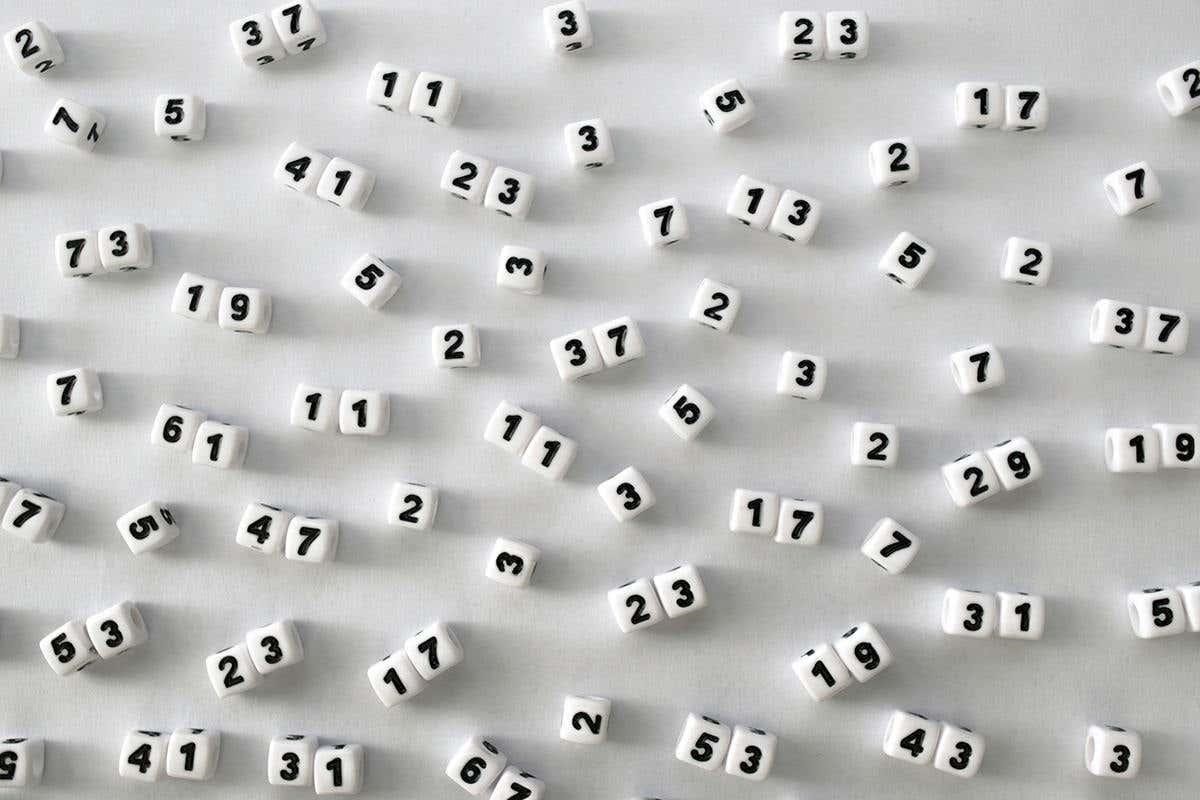Mathematicians are stunned by the discovery that prime numbers are pickier than previously thought. The find suggests number theorists need to be a little more careful when exploring the vast infinity of primes.
Primes, the numbers divisible only by themselves and 1, are the building blocks from which the rest of the number line is constructed, as all other numbers are created by multiplying primes together. That makes deciphering their mysteries key to understanding the fundamentals of arithmetic.
Although whether a number is prime or not is pre-determined, mathematicians don’t have a way to predict which numbers are prime, and so tend to treat them as if they occur randomly. Now Kannan Soundararajan and Robert Lemke Oliver of Stanford University in California have discovered that isn’t quite right.
“It was very weird,” says Soundararajan. “It’s like some painting you are very familiar with, and then suddenly you realise there is a figure in the painting you’ve never seen before.”
Surprising order
So just what has got mathematicians spooked? Apart from 2 and 5, all prime numbers end in 1, 3, 7 or 9 – they have to, else they would be divisible by 2 or 5 – and each of the four endings is equally likely. But while searching through the primes, the pair noticed that primes ending in 1 were less likely to be followed by another prime ending in 1. That shouldn’t happen if the primes were truly random – consecutive primes shouldn’t care about their neighbour’s digits.
“In ignorance, we thought things would be roughly equal,” says Andrew Granville of the University of Montreal, Canada. “One certainly believed that in a question like this we had a very strong understanding of what was going on.”
The pair found that in the first hundred million primes, a prime ending in 1 is followed by another ending in 1 just 18.5 per cent of the time. If the primes were distributed randomly, you’d expect to see two 1s next to each other 25 per cent of the time. Primes ending in 3 and 7 take up the slack, each following a 1 in 30 per cent of primes, while a 9 follows a 1 in around 22 per cent of occurrences.
Similar patterns showed up for the other combinations of endings, all deviating from the expected random values. The pair also found them in other bases, where numbers are counted in units other than 10s. That means the patterns aren’t a result of our base-10 numbering system, but something inherent to the primes themselves. The patterns become more in line with randomness as you count higher – the pair have checked up to a few trillion – but still persists.
“I was very surprised,” says James Maynard of the University of Oxford, UK, who on hearing of the work immediately performed his own calculations to check the pattern was there. “I somehow needed to see it for myself to really believe it.”
Stretching to infinity
Thankfully, Soundararajan and Lemke Oliver think they have an explanation. Much of the modern research into primes is underpinned G H Hardy and John Littlewood, two mathematicians who worked together at the University of Cambridge in the early 20th century. They came up with a way to estimate how often pairs, triples and larger grouping of primes will appear, known as the k-tuple conjecture.
Just as Einstein’s theory of relativity is an advance on Newton’s theory of gravity, the Hardy-Littlewood conjecture is essentially a more complicated version of the assumption that primes are random – and this latest find demonstrates how the two assumptions differ. “Mathematicians go around assuming primes are random, and 99 per cent of the time this is correct, but you need to remember the 1 per cent of the time it isn’t,” says Maynard.
The pair used Hardy and Littlewood’s work to show that the groupings given by the conjecture are responsible for introducing this last-digit pattern, as they place restrictions on where the last digit of each prime can fall. What’s more, as the primes stretch to infinity, they do eventually shake off the pattern and give the random distribution mathematicians are used to expecting.
“Our initial thought was if there was an explanation to be found, we have to find it using the k-tuple conjecture,” says Soundararajan. “We felt that we would be able to understand it, but it was a real puzzle to figure out.”
The k-tuple conjecture is yet to be proven, but mathematicians strongly suspect it is correct because it is so useful in predicting the behaviour of the primes. “It is the most accurate conjecture we have, it passes every single test with flying colours,” says Maynard. “If anything I view this result as even more confirmation of the k-tuple conjecture.”
Although the new result won’t have any immediate applications to long-standing problems about primes like the twin-prime conjecture or the Riemann hypothesis, it has given the field a bit of a shake-up. “It gives us more of an understanding, every little bit helps,” says Granville. “If what you take for granted is wrong, that makes you rethink some other things you know.”
For more such insights, log into www.international-maths-challenge.com.
*Credit for article given to Jacob Aron*


